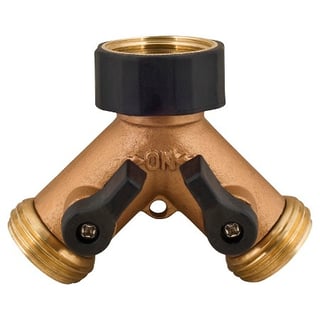Checking the pressure
Get yourself a two way hose connector (~$6), and a water pressure gauge that fits 3/4" garden hose thread (GHT) (~$10)


Connect the pressure gauge to one of the legs of the wye connector, and turn the valve for that leg on. Connect the wye connector to a utility sink tap, or a hose bib. Turn the valve on the open leg of the wye connector off, and open the valve on the sink/bib.
At this point, the gauge should display the pressure within the plumbing system.
Open and close the valve on the wye connector, then check the gauge again. Do this a couple times, to make sure you're getting a consistent reading.
NOTE: When testing the pressure, you'll want to make sure the water heater is not actively heating the water. If it is, wait for it to finish before checking the pressure.
The International Plumbing Code says that the water pressure should be grater than 40 psi, but less than 60 psi. So you'll be looking for a pressure within that range. If it's above that, you'll have to take a closer look at the system.
Determine the cause
Depending on when your home was built/remodeled, there may be a check valve installed on the main supply line. If this is the case (should be with modern homes), then heating water can increase the pressure within the plumbing system. If there is a check valve installed, you'll want to make sure you have an expansion tank installed near the water heater. You'll also want to check to make sure the expansion tank is in good working order.
If all that checks out, the high pressure is likely due to high supply pressure. In this case, you'll want to install (or have installed) a pressure regulator on the main supply.
Once installed, you can use the pressure gauge setup from above, to adjust the regulator to the desired pressure.


